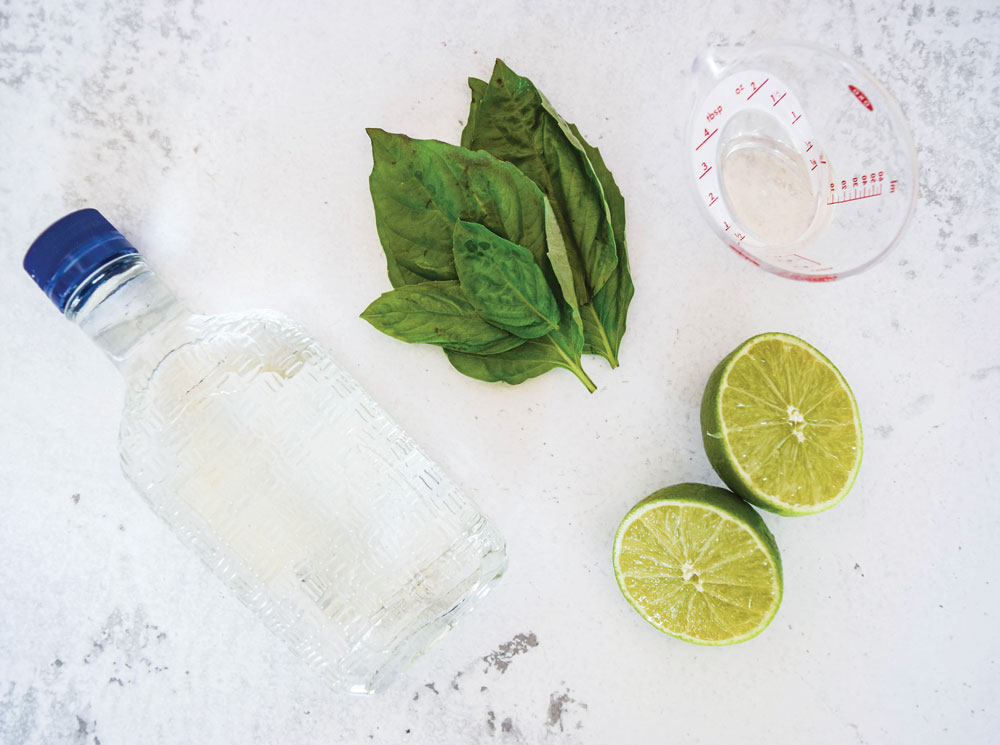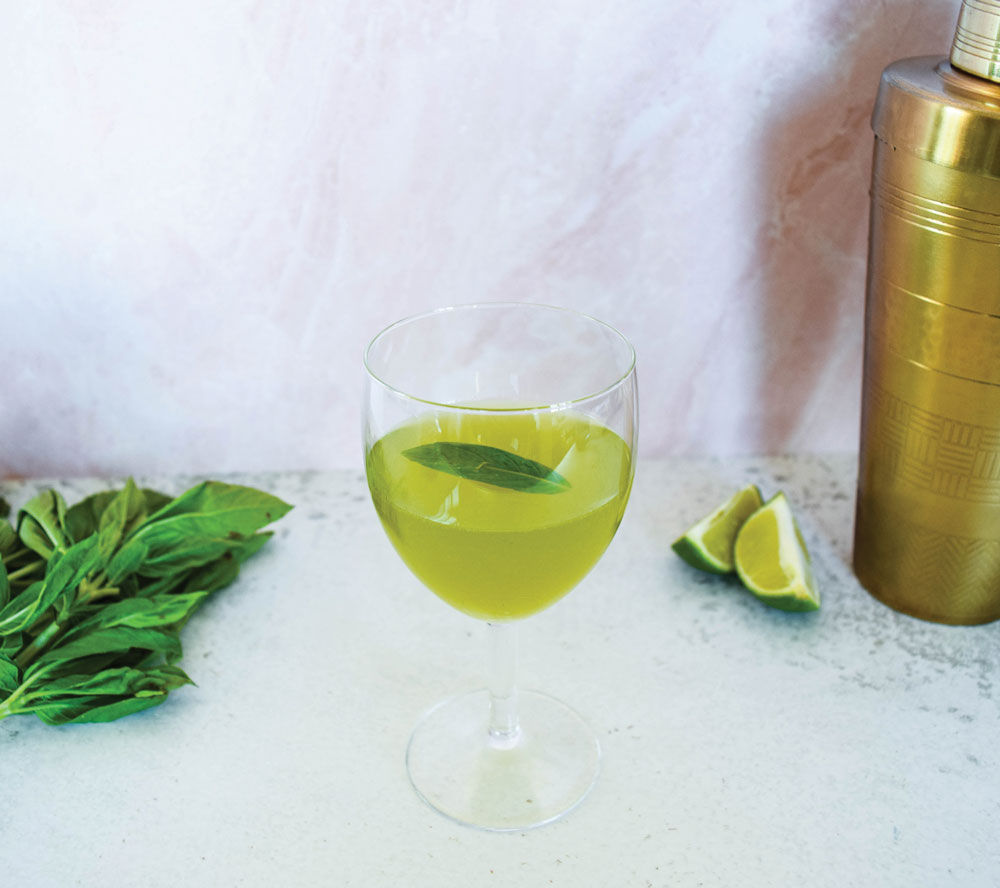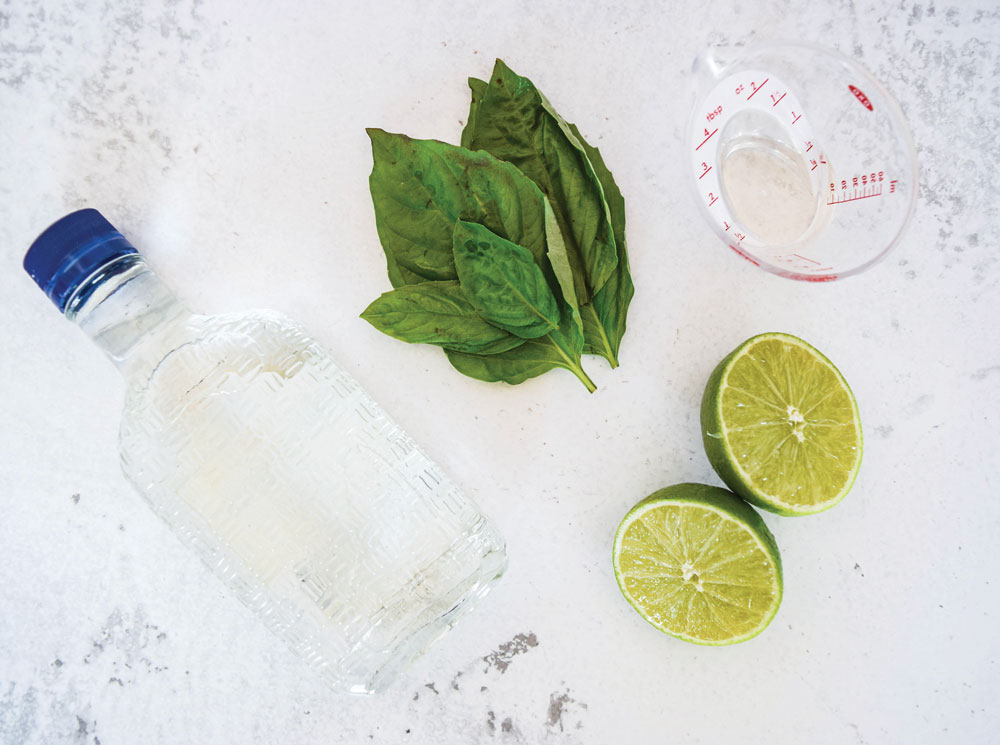A New Cocktail for Hunt Country’s Oldest Race

Story, Recipe and Photos by Kaitlin Hill
Overflowing tailgate tables, elaborate hats and the unmistakable pounding of galloping horses are longstanding emblems of spring in Virginia’s Hunt Country. For decades, racegoers have celebrated spring in style at Glenwood Park, which will host the 99th Middleburg Spring Races on April 20.
Tailgate veterans will agree, no race day celebration is complete without a signature drink. This year, try a Basil Gimlet, a spring-inspired twist on a classic cocktail—with a similar origin story to Middleburg’s main event.

Horse racing has a long history in Virginia, stretching back beyond William Byrd III’s four-mile melee at Anderson’s Race Ground in 1752, one of the first significant races on record. Already well liked among England’s elite in the early 1700s, racing grew in popularity with wealthy colonists in the mid-Atlantic. Driven by societal pressure, a love of gambling and desire to show off his recently imported horse, Byrd decided to host a race at his Richmond home, offering a purse of 500 Spanish pistoles—a fortune by 18th century standards. As more prominent horsemen entered the competition, the purse grew, and so did the public’s fascination with the sport.
Over the next century, race associations, tracks and events would pop up from New York to South Carolina, and especially in Virginia, where it all began. In 1911, a well-known local sportsman named Daniel Cox Sands established the first official Middleburg race. A year later, The National Steeplechase and Hunt Association endorsed his race, which from then on would be held annually on Sand’s property.
Thousands of spectators traveled miles, with tailgate picnics in tow, to watch the Middleburg Hunt Cup, Farmer’s race and, by the 1930s, as many as nine other events. In 1932, Glenwood Park was built, offering competitors new and challenging terrain, including an obstacle that required clearing a stream, a flat turf track and Liverpool jumps. Sands would host the race for more than four decades and chair the Middleburg Racing Association until his death in 1963. Over 50 years later, tailgaters from far and wide will gather next month for the 99th Middleburg Spring races, participating in Sand’s legacy and the age-old tradition of strong drinks and fast horses.
With English roots and a similar journey to America, perhaps the most appropriate drink to celebrate a day spent at the races is the Gimlet. It was invented in the late 18th century and was the drink of choice for sailors in the Royal Navy headed for British colonies. It is named for the tool used to dig holes into the lime juice barrels often found on these ships ferrying men and goods from England to America.
The drink loved by many for its smooth finish and soft sweetness was actually the product of practicality. Lime, a main ingredient, was provided to combat scurvy, and alcohol may have made the journey more tolerable. Like horse racing, the beverage’s popularity grew in British high society, especially in the mid-20th century, before finding its following in America.
Though the classic gimlet consists of only gin or vodka, lime juice, and simple syrup, the addition of fresh basil gives the all-season drink an infusion of spring flavor, making it a refreshing sip for Middleburg’s Spring Races.
Ingredients:
6 basil leaves
1 ½ ounces of gin
1 ounce of fresh lime juice
¼ cup of sugar
¼ cup of water
Makes one drink.
Directions:
To make the simple syrup for the cocktail, place the sugar and water
in a small saucepan over medium-high heat.
Cook, stirring occasionally, until the sugar is completely
dissolved. Set aside to cool.
This will make more simple syrup than needed for one cocktail.
Store the rest in an airtight container in the fridge for cocktails any time.
In a cocktail shaker, muddle five of the six basil leaves with a muddler or wooden spoon. Add the gin, lime juice and half an ounce
of simple syrup. Top off with ice.
Give the mixture a vigorous shake before straining into a small
coupe glass. Top with the remaining basil leaf.
Enjoy immediately while cheering on your favorite racehorse.

Kaitlin Hill is a Culinary Institute of America trained chef and the creator of the Emotional Eats Blog where she shares her original recipes and studies in food history. To read more, visit www.emotionaleats.com.
This article first appeared in the March 2019 issue of Middleburg Life.


